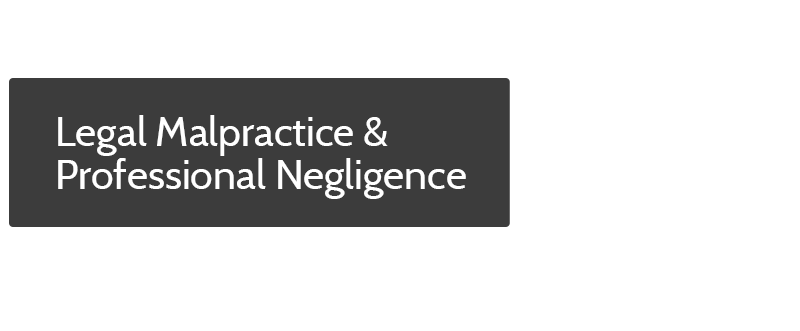When Has a Plaintiff Suffered “Actual Injury” to Trigger the Statute of Limitations on Legal Malpractice?
In Monday’s post, we discussed “tolling” of the statute of limitations on legal malpractice actions. In the legal malpractice context, the “statute of limitations” refers to the time within which a plaintiff must commence a legal action against the defendant attorney. Under some circumstances, this limitations period is “tolled,” or suspended, until a specified situation or action occurs. While plaintiffs should never delay filing and prosecution of an action for legal malpractice, it can be helpful to look at what the law has to say about tolling the statute of limitations.
GENERALLY, THE STATUTE OF LIMITATIONS IS TOLLED UNTIL THE PLAINTIFF SUFFERS “ACTUAL INJURY.”
In most cases, the client will already have suffered damages by the time he or she learns about the defendant lawyer’s alleged malpractice. Sometimes, the occurrence of damages is the event which alerts the client to the attorney’s malpractice. It’s possible that a client might learn of the lawyer’s malpractice before the damages occur–but beware: a plaintiff often has a duty to mitigate (lessen) actual or potential damages, so a client cannot normally discover a lawyer’s wrongful conduct and then just sit around waiting for the damages to take place.
Actual injury requires more than “nominal damages” or prospective harm. However, the plaintiff need not have suffered all of the prospective damages in order to start the statute of limitations. As soon as appreciable, measurable harm begins, the statute will also begin to run.
Moreover, plaintiffs should remember that “damages” does not refer exclusively to economic harm. The loss of rights or remedies can also trigger the statute of limitations on legal malpractice.
WHAT CONSTITUTES “ACTUAL INJURY” TO TRIGGER THE STATUTE OF LIMITATIONS?
For purposes of the statute of limitations, “actual injury” means any injury or loss which would be recognized as “damages” in a legal malpractice action. In other words, as soon as the plaintiff can prove damages which would support or sustain a legal action against the defendant attorney, the statute of limitations will begin to run (provided the client is also aware–or should be aware–of the potential claim).
Damages, and when they occurred, are generally issues of fact (for decision by the jury, if there is one). However, like many other issues of fact, the judge can decide the issue as a question of law if the evidence leaves no doubt about the existence or nonexistence of injuries, or the date upon which the injury occurred.
Many plaintiffs erroneously believe that a completed litigation, judgment, or settlement is required in order for “actual injury” to occur. This is not the case. While completion of the litigation matter in which the professional negligence occurred may establish “actual injury” for malpractice purposes, injury may also occur before the litigation is complete or final. Never assume that the statute of limitations will be delayed until “the end” of the underlying case.
The existence (and date) of “actual injury” is a fact-specific question which must be determined on a case by case basis. However, this makes it dangerous for clients to delay in pursuing potential claims. The statute of limitations can run out on plaintiffs who wait to seek a consultation or pursue an action against a professionally negligent attorney.
***
Disclaimer: Damages and statutes of limitations are complicated topics, and articles like this touch only on the basic issues. The details of a legal malpractice claim, and the applicable statutes of limitations are individualized and complicated. THIS ARTICLE IS FOR INFORMATIONAL PURPOSES ONLY, AND DOES NOT CONSTITUTE LEGAL ADVICE. Your rights and experiences may vary. Never use an article (or any online source) to evaluate your legal claims. Always speak with an experienced lawyer promptly to obtain a personalized evaluation of your claims, possible damages, and options.
















